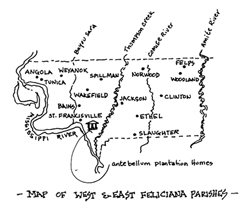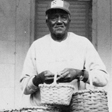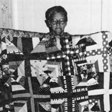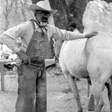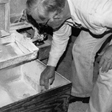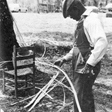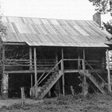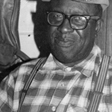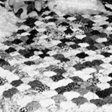Table of Contents
Folk Regions
Three Ethnic Perspectives
Folk Music of the Florida Parishes
People of the Florida Parishes
In Retrospect

The Felicianas
By Susan Garrett Davis
More than the other Florida Parishes, East and West Feliciana can be considered a former plantation region. Much of the early plantation development in the Felicianas was stimulated not by French or West Indian systems, but by the Tidewater plantations in coastal Virginia and the Carolinas. Tidewater influence came earliest and most heavily to West Feliciana. East Feliciana was initially settled more thoroughly by Upland South yeoman farmers and small planters.
The initial pattern of settlement in the Felicianas was a Tidewater enclave in the most fertile parts of West Feliciana, surrounded by Upland South settlements in the rest of the area. The topography and soil composition of the Felicianas dictated this particular settlement pattern. The area of the Tidewater enclave coincided with the riverine flood plain and upland hardwood forests of West Feliciana. The upland hardwoods of West Feliciana (which form the only major area of this forest type in the state) indicate the presence of loess soil, a loamy, windblown soil that can compete with the alluvial floodplains for richness. Thus, the wealthier Tidewater planters were able to come in and purchase the areas of fertile alluvial and loess soil, while the Upland South yeoman farmers claimed the less-productive upland mixed pine-hardwoods land of eastern West Feliciana and East Feliciana.
Coming overland or down the Mississippi on flatboats, these Upland South settlers migrated from the Southern Appalachian and Southern Piedmont areas of eastern Tennessee, Kentucky, West Virginia, and Carolina, northern Georgia, and Alabama. They arrived at the same time as, and in larger numbers than, the Tidewater planters.
Looking at the material landscapes of the two parishes, the early Tidewater dominance of West Feliciana can still be found in a number of Tidewater-style plantation homes, three Episcopal churches (one now deconsecrated), and the remnants of a British survey system done in metes and bounds, as opposed to the French arpent or American town and range system. These marks of Upland South heritage can be seen on the East Feliciana landscape: buildings of log construction, use of "branch" as a place name, many fine examples of the Carolina "I" house between Clinton and Jackson, the courthouse square, and a predominantly Baptist/Methodist population.
The early distinction between the Tidewater enclave in West Feliciana and the Upland South pioneer settlements in East Feliciana blurred with time, so that eventually the entire area took on characteristics of both. The "pioneers" became prosperous planters and built Greek Revival mansions that rivaled those on the western banks of Thompson Creek (the dividing line between the two parishes). When the Clinton/Port Hudson Railroad opened in 1840, it provided Clinton with the direct transportation to the Mississippi River that it needed to prosper. Clinton and nearby Jackson became educational centers for rural South Louisiana. By 1860 there were three well-attended female seminaries and two private schools for boys in Clinton; the College of Louisiana was founded in Jackson in 1825 and was sold to the Methodist Church in 1845 when it became Centenary College. Perception of West Feliciana as the more aristocratic, more Tidewater of the two parishes seems to linger in some minds (such as lifelong residents of West Feliciana), though there is little in the lives of the people in the two parishes to indicate such a difference. In 1930, Louis Butler (descendant of the Butler planter family) wrote in the Louisiana Historical Quarterly: "The people of East Feliciana pride themselves upon their intellect; the people of West Feliciana upon the azure tint of their blood in addition (we hope) to the former."
This lingering perception among some of heightened aristocracy on one side or the other of Thompson Creek has fostered a rivalry of sorts between the sister parishes. Though carefully unacknowledged, this rivalry is most evident among the parishes' historical organizations: the West Feliciana Historical Society on one hand, and the East Feliciana Garden Club and the Jackson Assembly on the other. All of these organizations present an activity to the public each spring, a tour of ante-bellum homes and/or an antique sale. Thus they are competing not only in a theoretical sense for claim to an aristocratic heritage, but in a real sense for the tourist dollar. And it must be noted that in the past few years the emphasis has shifted slightly from the planter aristocracy toward the Upland South, pioneer heritage of the yeoman farmer and small planter. West Feliciana, that land of "azure blood," has recently featured in its annual tour a Rural Homestead which showcases spinning, blacksmithing, plowing, soap making, and basket making performed by both Black and white members of the community. In the same spirit, the Clinton Civic League now sponsors an arts and crafts festival to coincide with the annual antique show in Jackson and tour of homes in East Feliciana.
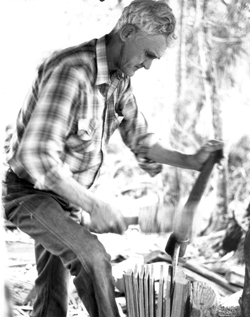
Most present-day examples of folk crafts that exist among whites in the Felicianas reflect the Upland South traditions of the parishes. They are involved in such traditional activities as string music playing and instrument building, quilting, old methods of logging and gardening with mules, cypress shingle making, and hunting.
Along with the Red River and upper Mississippi Delta, the Felicianas formed Louisiana's "Black Belt," a region where Blacks historically made up more than 60 percent of the population. These were the parishes where large cotton plantations flourished before the Civil War. The relationship between plantation regions and the "Black Belt" is a clear one. Large black populations were established during slave-holding days, and many of these former slaves and their descendants remained in the area to work crops of cotton and, later, corn and sweet potatoes.
The wage/contract system of labor for the freed slaves was the most popular system only through the early 1870s. The crop failures of 1867 and 1868, along with difficulties planters had managing the contracted Black labor force, led them to move to other systems from other eras, such as sharecropping, share-tenantry, renting, and complex variations of these three.
With sharecropping and tenantry came the crop lien system, which remained common through the middle of this century. Liens extended through all strata of the plantation system. The sharecropper would take a lien on his crop at the landlord's store, and the landlord himself would use liens to buy the food and goods he wanted from mercantile establishments in the nearby towns. A whole body of folklore evolved from the dishonesties of the crop-lien system, and the stories, whether about a tenant/planter or planter/merchant relationship, seem virtually indistinguishable.
Sharecropping remained a popular agricultural labor system in the Felicianas all the way through the 1950s and 60s. The advent of tractors changed the predominant system somewhat, from pure sharecropping to myriad combinations of sharecropping and tenant farming.
Along with these changes in the agricultural system came the Civil Rights Movement. For the first time since Reconstruction, a significant change in the economic and social relationship of the races began to take place. Many of the older Black informants I interviewed identified their place of birth as one plantation or another, an indication of the tenacity with which the plantation system held on into this century. Many could also identify the plantations where their parents and grandparents had been born. Their children, however, now in their twenties to forties, have few links with the old plantations, and even fewer memories of "benevolent" actions by white landowners. Therefore, it is not surprising that I found these children and grandchildren were at first more suspicious of my actions as a fieldworker than were the older informants themselves.
Integration of public schools and most town and parish governmental bodies has altered the balance of political power between the races in the Felicianas. Economically, too, Blacks have made some gains in the last few decades; no longer are they tied so exclusively to the white-owned farm. Blacks have become successful carpenters and bar-owners, and some have found jobs in such institutions and industries as the paper mill and the nuclear power plant in West Feliciana and the East Louisiana State Hospital in Jackson.
But many Blacks remain seasonal laborers on farms and renters of houses and land. Given this basic lack of economic opportunity for Blacks (a lack that extends to young whites as well), it is not surprising that a Black exodus appears in each census of the past several decades. Many Black Felicianians have moved no farther than Baton Rouge. Edna Jordan Smith, a Baton Rouge teacher who is researching a group of freed slaves that moved from West Feliciana to Canada in the 1860s, related that the large Black community in South Baton Rouge was "basically built by Black Felicianians." Others moved to New Orleans or across the Mississippi River to Pointe Coupee Parish. Smaller numbers moved to Chicago, Detroit, or Los Angeles, as well as to other northern cities.
Bibliography and Archival Resources
Butler, Louise. "West Feliciana--A Glimpse of Its History." Louisiana Historical Quarterly 7:1 (1930).
Clay, Floyd M. "Economic Survival of the Plantation System Within the Feliciana Parishes, 1865-1860." M.A. Thesis, Louisiana State University, 1962.
Cordell, Bryan David. "Socio-Economic Profile of East Feliciana Parish." M.S.W. Thesis, Louisiana State University, 1969.
David, Edwin Adams. "Plantation Life in the Florida Parishes of Louisiana, 1836-1846." Diary of Bennet H. Barrow, 1943.
de Caro, Frank A., and Jordan, Rosan A. Louisiana Traditional Crafts. Baton Rouge: LSU Union Gallery, 1980.
Deiler, J. Hanno. A History of the German Churches in Louisiana, (1832-1893). Lafayette: Center for Louisiana Studies, University of Southwestern Louisiana, 1983.
Dunbar, Anthony. The Will To Survive. Atlanta: Southern Regional Council, 1969.
East Feliciana Development Board. East Feliciana Parish Resources and Facilities. Clinton: East Feliciana Development Board, 1965.
East Feliciana Sesquicentennial Committee. East Feliciana Parish 1824-1974, ‘Land of Seven Spring and Seven Pastures’. Clinton: East Feliciana Parish Sesquicential Committee, 1974.
Forrester, Henry Howard, Jr. Bluff Creek, Louisiana. Interview by Susan Garrett Davis. February 25, 1984.
Fulton, John Ella Wales. St. Francisville, Louisiana. Interview by Susan Garrett Davis. March 7, 1984.
Gibson, Herman. "Deer Hunting in Concordia Parish: The Role of Male Sodalities in the Maintenance of Social Values. M.A. Thesis, Louisiana State University, 1974.
Frazier, Wattine. "The Great Planter in West Feliciana Parish, Louisiana, 1850-1860." M.A. Thesis, Louisiana State University, 1969.
Hall, Kernan. Norwood, Louisiana. Interview by Susan Garrett Davis. March 7, 1984.
Hooge, Conrad. Clinton, Louisiana. Interview by Susan Garrett Davis. April 9, 1984.
Hopper, Cleve. Ethel, Louisiana. Interview by Susan Garrett Davis. April 7, 1984.
Hudson, John L. St. Francisville, Louisiana. Interview by Susan Garrett Davis. March 3, 1984.
Johnson, Sam Marshall. Bains, Louisiana. Interview by Susan Garrett Davis. March 24, 1984.
Kaplan, Benjamin. The Eternal Stranger. New York: Bookman Associates, 1957.
Kniffen, Fred B. "The Deer Hunt Complex in Louisiana." Journal of American Folklore, April-June, 1949.
_____. "Cultural Survey of Louisiana." Cultural Worlds. New York: MacMillan and Co., 1951.
_____. Louisiana: Its Land and People. Baton Rouge: Louisiana State University Press, 1972.
Kriger, Albert. "A Study of the Speech of Clinton, Louisiana, at Three Age Levels." M.A. Thesis, Louisiana State University, 1942.
London, Freddie. Clinton, Louisiana. Interview by Susan Garrett Davis. March 5, 1984.
London, Willie. Ethel, Louisiana. Interview by Susan Garrett Davis. April 7, 1984.
Louisiana Academy of Science. "An Archeological, Geographical and Geological Tour, Part I: Blufflands and Terrace." Paper presented at the 46th Annual Meeting of the Louisiana Academy of Science.
McNabb, Oliver. St. Francisville, Louisiana. Interview by Susan Garrett Davis. March 3, 1984.
Metz, Carl. Solitude, Louisiana. Interview by Susan Garrett Davis. March 4, 1984.
Newton, Milton B. "Louisiana House Types: A Field Guide." Melanges 2 (1971).
_____. Atlas of Louisiana. Baton Rouge: Louisiana State University Press, 1972.
_____. "Settlement Patterns as Artifacts of Social Structure." The Human Mirror. Edited by Miles Richardson, Baton Rouge: Louisiana State University Press, 1974.
_____. Louisiana Geography. (Syllabus for Geography 4001). Baton Rouge: Louisiana State University School of Geoscience, 1976.
Norwood, John Barrow. Wyanoke, Louisiana. Interview by Susan Garrett Davis. March 23, 1984.
Pate, Violet. Bains, Louisiana. Interview by Susan Garrett Davis. March 24, 1984.
Payton, Lilly. Solitude, Louisiana. Interview by Susan Garrett Davis. March 3, 1984.
Reeves, Miriam G. The Felicianas of Louisiana. Baton Rouge: Claitor's, 1967.
Richardson, Turlie. Solitude, Louisiana. Interview by Susan Garrett Davis. March 5, 1984.
Shanabruch, Charles. "The Louisiana Immigration Movement, 1891-1907: An Analysis of Efforts, Attitudes, and Opportunities." Louisiana History 18 (1977): No. 2.
Shugg, Roger W. Origins of Class Struggles in Louisiana. Baton Rouge: Louisiana State University Press, 1939.
Skipwith, Henry. East Feliciana, Louisiana Past and Present. New Orleans: Hopkins Printing Office, 1892.
Smith, Edna Jordan. Baton Rouge, Louisiana. Interview by Susan Garrett Davis. April 1984.
Smith, Lynn T. and Hitt, Homer L. The People of Louisiana. Baton Rouge: Louisiana State University Press, 1952.
U.S. Department of Commerce, Bureau of the Census. Country and City Data Book.
Warm, Walter William. Clinton, Louisiana. Interview by Susan Garrett Davis. March 6, 1984.
The Watchman. September, 1983. "Facts About West Feliciana."
Welch, Louvenia Rankin. St. Francisville, Louisiana. Interview by Susan Garrett Davis. March 5, 1984.
Wood, Hannah Rosenthal. St. Francisville, Louisiana. Interview by Susan Garrett Davis. March 25, 1984.


